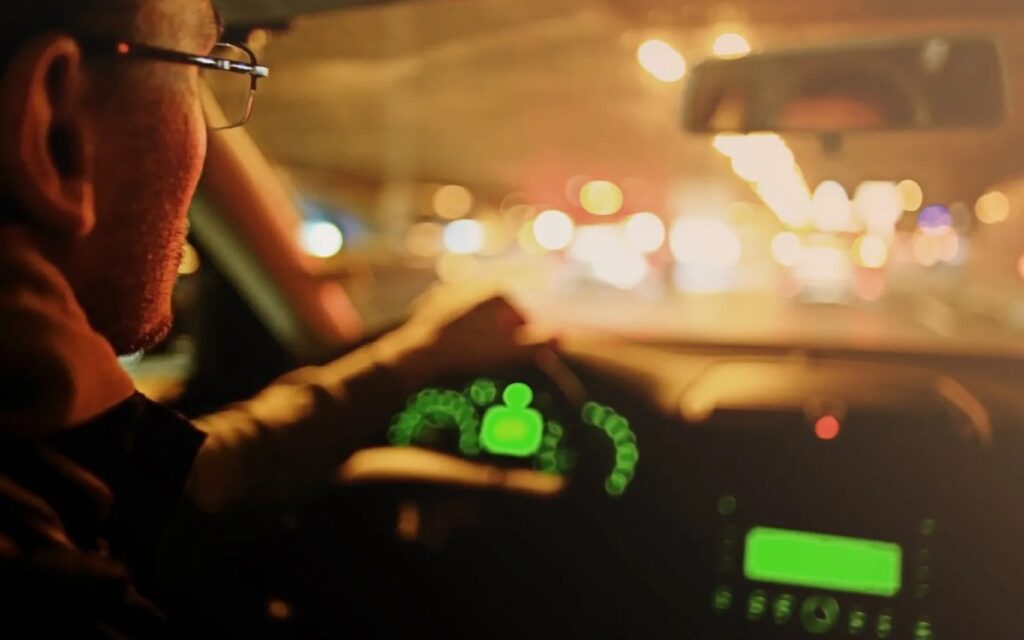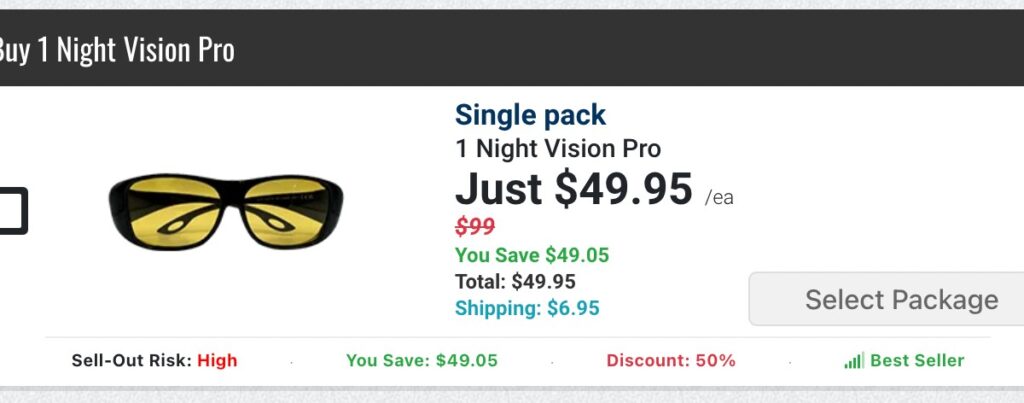Mastering Tips for driving at Night: Your Guide to Night Drive Safety Tips to Stay Safe
As the sun dips below the horizon and darkness blankets the world, the allure of the open road may beckon you. Yet, with the veil of nightfall comes a unique set of challenges for drivers on How to drive safely at night.
Reduced visibility, drowsiness, and the presence of impaired motorists all contribute to making nighttime driving inherently riskier than its daytime counterpart.

However, fear not, for within this article lies a roadmap to navigate the night safely and with confidence.
Whether you’re a seasoned night owl or a novice explorer of the nocturnal highways, mastering the art of driving after dark is crucial for ensuring your safety and the safety of those around you.
Join us as we illuminate the key strategies and techniques that will empower you to embrace the darkness behind the wheel.
From understanding the science of night vision to combating fatigue and distractions, we’ll delve into practical tips and expert insights to help you sharpen your skills and make every journey under the stars a secure one.
So buckle up, adjust your mirrors, and let’s embark on a journey together towards mastering the night drivers, where safety takes the wheel and guides us through the shadows with confidence and ease.
Is driving at night more dangerous?
Yes, driving at night tends to be more dangerous than driving during the day for several reasons:
- Reduced visibility. It’s simply harder to see at night, especially on roads with no streetlights. Drivers have more difficulty seeing the road, other vehicles, pedestrians, animals that may cross the road, and road signs/hazards.
- Increased driver fatigue. Driving in the dark tends to make people more tired and less alert, which slows vehicle at night if you need to brake or turn quickly. The eye also has to work harder to see in low light.
- Headlight glare. Bright lights from oncoming cars can momentarily blind or disorient drivers at night. This is especially an issue with newer vehicles that have very intense headlights on high beam.
- More impaired drivers. Data shows more drunk, drowsy, or distracted driving takes place at night when fewer police patrol the roads. Impaired driving hugely decreases reaction times and good decision making.
- Lower seatbelt use. For unclear reasons, fewer people buckle up when driving at night. This puts people at greater risk of injury or death in a crash.
So in summary, reduced vision, driver fatigue, impaired drivers, and lower seatbelt use are major factors that raise the risks of driving at night.
Compensating with slowed speeds, maximum lighting use, full attention to driving, and seatbelts can help mitigate those risks if night driving is necessary.

Introducing the ultimate Night Vision Pro Driving Glasses to drive safely at Night
Night Vision and night drive
How to Drive Safely at Night depends on Our ability to see and navigate in low light conditions depends on a type of photoreceptor cells in the retina called rods.
Unlike cone cells that detect color and details when there is plenty of light, the rod cells provide peripheral vision and increase visual sensitivity in the dark.
When it gets dark, the rod cells become more sensitive while the cone cells lose much of their function.However, night vision capabilities still remain far worse than daytime vision.
The shift from cone to rod vision means we lose the ability to discern colors, have a narrowed field of view, and reduced visual acuity and depth perception in the dark.
Additional challenges like drowsy driving and recognizing moving objects further hinder How to drive safely at Night. It takes around 30 minutes for the chemistry of the eyes to transition to night vision mode.
Even then, people struggle with impaired vision ranging from just noticeable differences to being considered legally blind depending on the darkness levels.
Assistive headlights, slowed speeds, and high visual concentration are needed to compensate for the deficiencies that happen at night.
How to Drive Safely at Night requires understanding and compensating for the limitations imposed by our physiology and overall health or weight loss.
Night glasses for driving and It’s Benefits
Night glasses for driving, also known as Night vision glasses, are designed to enhance visibility while driving in low-light conditions the best tips on how to drive safely at night.
These glasses typically feature yellow-tinted lenses that help filter out high beam from headlights and streetlights, improve contrast, and enhance depth perception.
Here are some key points about night glasses for how to drive safely at night:
- Glare Reduction: Night glasses can help reduce oncoming traffic, especially from vehicles with high-intensity discharge (HID) or LED lights. The yellow tint of the lenses helps to minimize the scattering of light, resulting in improved visibility and reduced eye strain.
- Enhanced Contrast: The yellow tint of night driving glasses can enhance contrast, making it easier to distinguish objects and hazards on the road, even in low-light conditions. This can be particularly helpful for drivers with age-related vision changes or those who have difficulty seeing in the dark.
- Reduced Eye Fatigue: improving contrast, night glasses can help reduce eye fatigue and discomfort during nighttime driving. This can contribute to a more comfortable and less stressful driving experience, especially during long journeys.
- Anti-Reflective Coating: Some night glasses come with an anti-reflective coating on the lenses, which further helps to minimize reflections. keep your eyes, particularly in challenging lighting conditions.
- Prescription Options: Night driving glasses are available in both prescription and non-prescription options, making them suitable for drivers with various vision needs. Drivers who wear prescription glasses can opt for night driving glasses with their prescription lenses to ensure optimal vision correction.
- Caution: While night driving glasses can be beneficial for some drivers, they may not be suitable for everyone. It’s essential to choose high-quality glasses that meet safety standards and to use them appropriately.
Before purchasing night glasses for driving, consider consulting with an eye care professional to determine if they are suitable for your specific vision needs and driving habits.
Additionally, be sure to research different brands and models to find the best option for your preferences and budget.
Tips for driving at night
Here are some top tips for how to drive safely at night:
- Be well-rested before a long drive at night, as fatigue leads to delayed reactions and poor decision making. Pull over and rest if feeling very tired. Drink a coffee or energy drink if you start to feel drowsy.
- Reduce your speed. Legal limits are for ideal conditions in daytime. You may need to go 10 mph under the speed limit if visibility is low or you face heavy rain or fog. Start braking earlier too.
- Use your headlights. Keep headlights on low beam so you don’t blind other drivers. Use high beams judiciously when there’s no traffic ahead. Also check and use fog lights if needed.
- Minimize other lights in your car. Bright inside lights make it tougher for your eyes to readjust to the dark when you glance out your windshield. Dim dashboard displays too if possible.
- Keep proper following distances. Experts recommend at least 3 seconds of space cushion between you and the car ahead. Increase this during bad weather or darkness.
- Use road lines as a guide rather than just focusing a couple feet in front of your bumper. Stay focused on keeping the car centered between lines.
- Clean headlights, windows, mirrors before driving at night. Dirty lenses, glass, and mirrors lead to glare and reduce how much the driver can see.
- Watch for animals, pedestrians, and cyclists. Scan road edges for potential hazards that are very tough to see in the dark. Slow down and concentrate.
- Take regular breaks to rest your eyes when taking long trips at night. Stop driving if eyestrain and fatigue become too challenging or risky. Safety first!
Follow these tips to improve nighttime driving safety for yourself and everyone sharing the roads. Stay vigilant for other drivers and allow extra time for trips after dark.
Drive Slower at Night headlight
Absolutely, driving slower at night is a prudent safety measure that can significantly reduce the risk of accidents. Here’s why:
- Reduced Visibility: With limited visibility at night, it becomes harder to spot hazards such as pedestrians, animals, and obstacles on the road. Driving at a slower speed gives you more time to react to unexpected situations.
- Increased Reaction Time: Slowing down increases your reaction time, allowing you to respond more effectively to sudden changes in road conditions or the behaviour of other drivers.
- Reduced Stopping Distance: At lower speeds, your vehicle requires less distance to come to a complete stop. This is crucial in situations where you need to brake suddenly to avoid a collision.
- Enhanced Control: Driving at a slower speed gives you better control over your vehicle, especially in challenging conditions such as wet or icy roads.
- Mitigation of Headlight Glare: Slowing down can help mitigate the effects of headlight from oncoming vehicles, reducing the risk of temporary blindness and allowing you to maintain focus on the road ahead.
By adjusting your speed to match the conditions of the road and your surroundings, you can enhance safety for yourself and others on the road, making nighttime driving a more manageable and secure endeavour.
Remember, arriving safely is always more important than arriving quickly, even how to drive safely at night depends solely on your decision.
Dangers of driving tips
Here are some of the main dangers associated with driving:
- Distracted driving – Things like texting, eating, talking on the phone, or even just being overly tired can severely distract a driver and raise the risk of accidents. Taking your eyes off the road for just 2 seconds doubles your risk of crashing.
- Drunk driving – Alcohol impairs judgement, sleepy, coordination, and other skills needed for safe driving. Over 30% of traffic deaths in the U.S. involve drunk driving. This is an entirely preventable yet common cause of accidents.
- Speeding – Excess speed reduces your ability to steer safely, extends stopping distances, and makes crashes more violent and lethal. Speed is a major contributor in around a third of all fatal crashes. Some drivers underestimate effects of speed.
- Aggressive driving – Behaviours like tailgating, rapid lane changes, running stop signs and red lights, road rage, etc. needlessly endanger everyone around aggressive drivers. Impatience is a big cause of aggressive driving behavior.
- Inclement weather – Rain, snow, fog, and ice all reduce traction make driving conditions more hazardous. Drivers need to slow down, increase distances, and boost concentration in bad weather.
Being constantly aware of these common dangers allows defensive driving – where you anticipate risks early so you can take preventative action.
But even defensive drivers should wear seatbelts given random chance always plays some role in accidents. Paying attention, making good decisions, and being sober, reasonable, and considerate on roads goes a long way toward safety!
Conclusion on how to drive safely at night

Driving at night poses increased risks that every driver needs to take seriously. night driving is dangerous, combined with factors like driver fatigue and impaired drivers on the roads, mean additional precautions are essential after dark.
By following national highway traffic safety administration such as reducing speed, increasing following distance, eliminating distractions, properly using lights, and taking breaks to rest eyes on long trips, drivers can compensate for the challenges of and perception.
Vehicle maintenance also plays a vital role on how to drive safely at night, through ensuring clear lenses, properly aimed headlights, and good wiper blades.
Ultimately, the key to safe night driving is extreme focus, caution, and patience behind the wheel. Defensive techniques help drivers identify hazards early despite darkness.
However, driving at night will never match the ease, comfort and control of driving in daylight.
Don’t drive when you won’t be able to see or when fatigue reach concerning levels that jeopardize safe operation, you must decide to either stop driving for the night or seek an alternative means of travel.
No trip is worth a life-threatening gamble against the increased risks you face in the darkness.
Stay smart, take it slow, use lights judiciously, and when in doubt, wait for sunrise if you can or let someone else take the wheel.
How to drive safely at night covers the essential steps and mindset all drivers must adopt to protect themselves and everyone sharing the road at night.
Do your part to face darkness with respect, responsibility and reason. We all deserve to get home safely



































